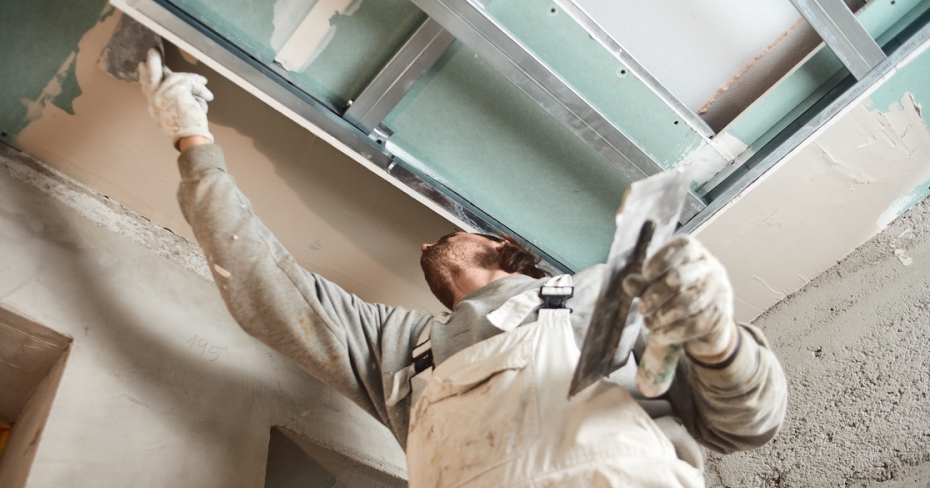What is a purchase plus improvements mortgage?

Sometimes referred to as a home improvement mortgage, a purchase plus improvements mortgage is a mortgage (the “purchase” part) with the cost of renovations (the “plus improvements” part) all rolled into one.
So you’ve found your new home and are ready to sign the documents. But the place needs a little work and you don't have quite enough money for repairs.
There is a mortgage that could work for you called the purchase plus improvements mortgage. Let’s take a look at what you need to buy your dream home and put in a new kitchen.
What is a purchase plus improvements mortgage?
Sometimes referred to as a home improvement mortgage, a purchase plus improvements mortgage is a mortgage (the “purchase” part) with the cost of renovations (the “plus improvements” part) all rolled into one.
You can borrow the cost of renovations up to a certain percentage, add it to the price of your home and you pay off both in one mortgage payment, all with as little as 5% down. Even better, you don’t have to wait for the money. As soon as you take possession of the home, you can start renovations.
If you meet the mortgage qualifications, you can get up to 10% of the purchase price, or up to $40,000 (whichever is less), for upgrades.
There are some requirements for you to get a purchase plus improvements mortgage in Canada. After all, it wouldn’t be a mortgage if there weren’t conditions. New construction or existing properties are considered for a purchase plus improvements mortgage. Also, the property can only have a maximum of four units and one of those units must be the owner’s principal residence.
How does a purchase plus improvements mortgage work?
In essence, a purchase plus improvements mortgage is a renovation mortgage. It’s intended for you to buy a house and finance some of the renovations required.
There are some criteria to qualify. For example, the renovations you’re making have to be permanent, so a peel-and-stick backsplash doesn’t count. The types of renovations that do count include:
- Finishing your basement
- Kitchen and bathroom upgrades
- Making your new home energy efficient
- Installing a new roof
A new pool doesn’t count, sorry.
Financing for renovation mortgages
When you’re filling out an application for a renovation mortgage in Canada, you have to provide a list of the planned improvements and the associated quotes. The lender takes those estimates and puts a valuation on the home. That value is then used to calculate the down payment, not the value of the home prior to the estimated improvements.
Once you’re approved, 95% of the money will be advanced. The remaining 5% will be held in trust by your real estate lawyer until your renovations are completed. This means you either have to pay some of the costs upfront out of pocket or pay your contractors at the end of the renovation. You’ll have to negotiate with your contractor. You can do the work yourself but the funds will only cover the cost of materials, not your labour.
You usually have between 90 and 120 days to complete the upgrades or renovations. Once the work is finished, an appraiser inspects the work and submits a report that says the work was done and is up to standard. Once the lender approves the report, the remaining 5% of the money is released.
If the upgrades/renovations cost less than what was estimated, the remaining money is put toward the mortgage, and you can enjoy your brand new kitchen or bathroom. If you don’t finish your renovation, however, the money will be applied to your mortgage principal but your monthly payments won’t decrease because the mortgage was given on the assumption you were going to do the renovations.
CMHC purchase plus improvements mortgage
Another way to get a renovation loan with your mortgage is via the Canada Mortgage and Housing Corporation (CMHC) Improvement program. This is very similar to a purchase plus improvements mortgage except it’s offered by CMHC — a government insurer of mortgage loans.
With the CMHC version of a purchase plus improvements mortgage, there are flexible borrowing options: single advances (where the cost of improvement is less than or equal to 10% of the as-improved value), and progress advances (for improvements costs greater than 10% of the as-improved value).
According to CMHC, this product provides “insured financing up to 95% of ‘as-improved’ value for 1 or 2 unit owner-occupied properties, and up to 90% for 3 to 4 unit owner-occupied properties.”
How to find the best rate on a purchase plus improvements mortgage
Most lenders in Canada offer a mortgage intended for home renovations. The rate you’ll get on a purchase plus improvements mortgage, however, will vary from lender to lender.
So if a purchase plus improvements mortgage is on your mind, compare rates from a variety of providers online before committing to one.
As well, ensure you do your due diligence — especially when finding a contractor and getting quotes for the work. Make sure you get multiple quotes and always check references. Buying a home is stressful enough. You don’t want to live in a permanent construction zone.
About the author

Renee Sylvestre-Williams is a finance and business reporter. In her more than 10 years of journalism, her work has been published in the Globe and Mail, Flare, Canadian Living, Canadian Business, the Toronto Star and Forbes. She also publishes a biweekly newsletter, The Budgette, where she provides financial education for single earners.


.jpeg)